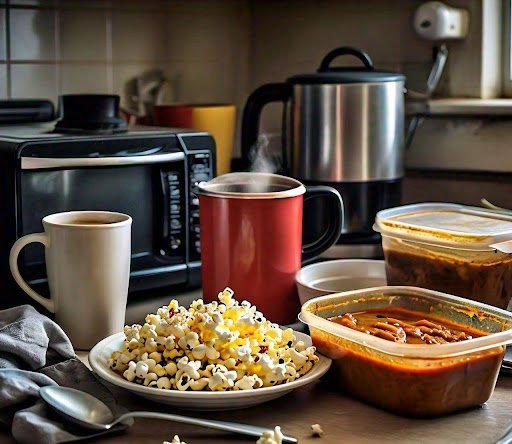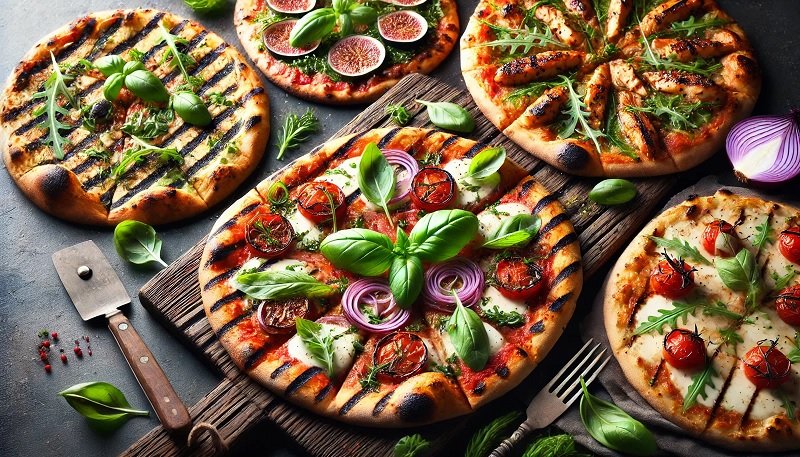
Microwave cooking is a quick and convenient way to prepare meals, but not all foods are created equal when it comes to microwaving. Understanding which foods are safe to microwave can prevent unpleasant surprises, such as explosions, burns, and even health risks. Knowing what you can safely cook in the microwave will help you utilize this kitchen appliance to its fullest. This article will cover the basics of microwave cooking, highlight safe and unsafe foods, and offer tips for safe microwaving. By the end, you’ll be able to confidently answer the question: can you microwave food?
The Basics of Microwave Cooking
Microwaves work by emitting electromagnetic waves that cause water molecules in food to vibrate, generating heat. This process cooks food quickly and evenly. However, not all foods react the same way in a microwave. Some foods can become overcooked, while others may not cook thoroughly. It’s essential to understand the characteristics of various foods before microwaving them.
The Importance of Knowing Safe Foods
Knowing which foods are safe to microwave is crucial for several reasons:
- Preventing Foodborne Illness: Microwaving improperly can lead to uneven cooking, which can allow harmful bacteria to survive.
- Avoiding Kitchen Disasters: Certain foods can explode or catch fire in the microwave, creating a mess and posing safety risks.
- Maintaining Flavor and Texture: Some foods lose their quality when microwaved, affecting taste and texture.
Now, let’s delve into the types of foods that are safe and unsafe for microwave cooking.
Safe Foods to Microwave
Some foods are perfectly suited for microwave cooking. Here’s a list of safe options:
1. Vegetables
Most vegetables are microwave-friendly. They cook quickly and retain their nutrients. Here are some popular choices:
- Broccoli
- Carrots
- Spinach
- Peas
2. Fruits
Many fruits can be microwaved to enhance flavor or soften texture. Consider these options:
- Apples (sliced or whole)
- Berries
- Bananas
- Peaches
3. Grains
Grains like rice and quinoa are safe to microwave. Use microwave-safe containers and add enough water to cook them properly.
4. Meats
Certain meats, such as chicken and fish, can be microwaved effectively. Ensure they are evenly cooked to avoid foodborne illness.
5. Leftovers
Reheating leftovers in the microwave is convenient. Just ensure they are heated thoroughly, reaching at least 165°F (74°C).
6. Soups and Sauces
Microwaving soups and sauces is generally safe. Stir them well during heating to avoid hot spots.
Unsafe Foods to Microwave
While many foods are safe, some should never go in the microwave. Here’s a list of items to avoid:
1. Whole Eggs
Whole eggs can explode in the microwave due to steam buildup. If you want to microwave eggs, consider scrambling them first.
2. Hot Peppers
Microwaving hot peppers can release capsaicin into the air, causing irritation to your eyes and throat.
3. Metal and Foil
Never use metal containers or aluminum foil in the microwave. They can cause sparks and fires.
4. Grapes
Microwaving grapes can create a fire hazard. They can explode due to their high sugar and water content.
5. Uncovered Containers
Always cover containers with microwave-safe lids or wraps. Uncovered containers can cause splatters and messes.
6. Certain Plastics
Not all plastics are microwave-safe. Using the wrong type can release harmful chemicals into your food.
Tips for Safe Microwave Cooking
To ensure safe microwaving, keep these tips in mind:
1. Use Microwave-Safe Containers
Always use containers labeled as microwave-safe. This includes glass, ceramic, and certain plastics.
2. Stir and Rotate Food
Microwaves heat unevenly. Stirring and rotating food helps ensure even cooking.
3. Cover Food
Use a microwave-safe cover or wrap to trap steam and heat. This also helps prevent splatters.
4. Check Temperature
Use a food thermometer to ensure that foods are heated to the appropriate temperature, particularly meats and leftovers.
5. Let Food Sit
After microwaving, let food sit for a minute. This allows heat to distribute evenly.
6. Follow Cooking Guidelines
Refer to cooking instructions for specific foods to determine recommended times and power settings.
Conclusion
Understanding what foods are safe to microwave and which aren’t is essential for effective and safe microwave cooking. By following the guidelines outlined in this article, you can enjoy the convenience of microwaving without the risk of kitchen disasters. Always remember to check the safety of containers, avoid certain foods, and follow cooking guidelines.
With this knowledge, you can confidently explore the world of microwave cooking. The next time you wonder can you microwave food, you’ll have a clear understanding of how to do it safely and effectively. Enjoy your cooking!








